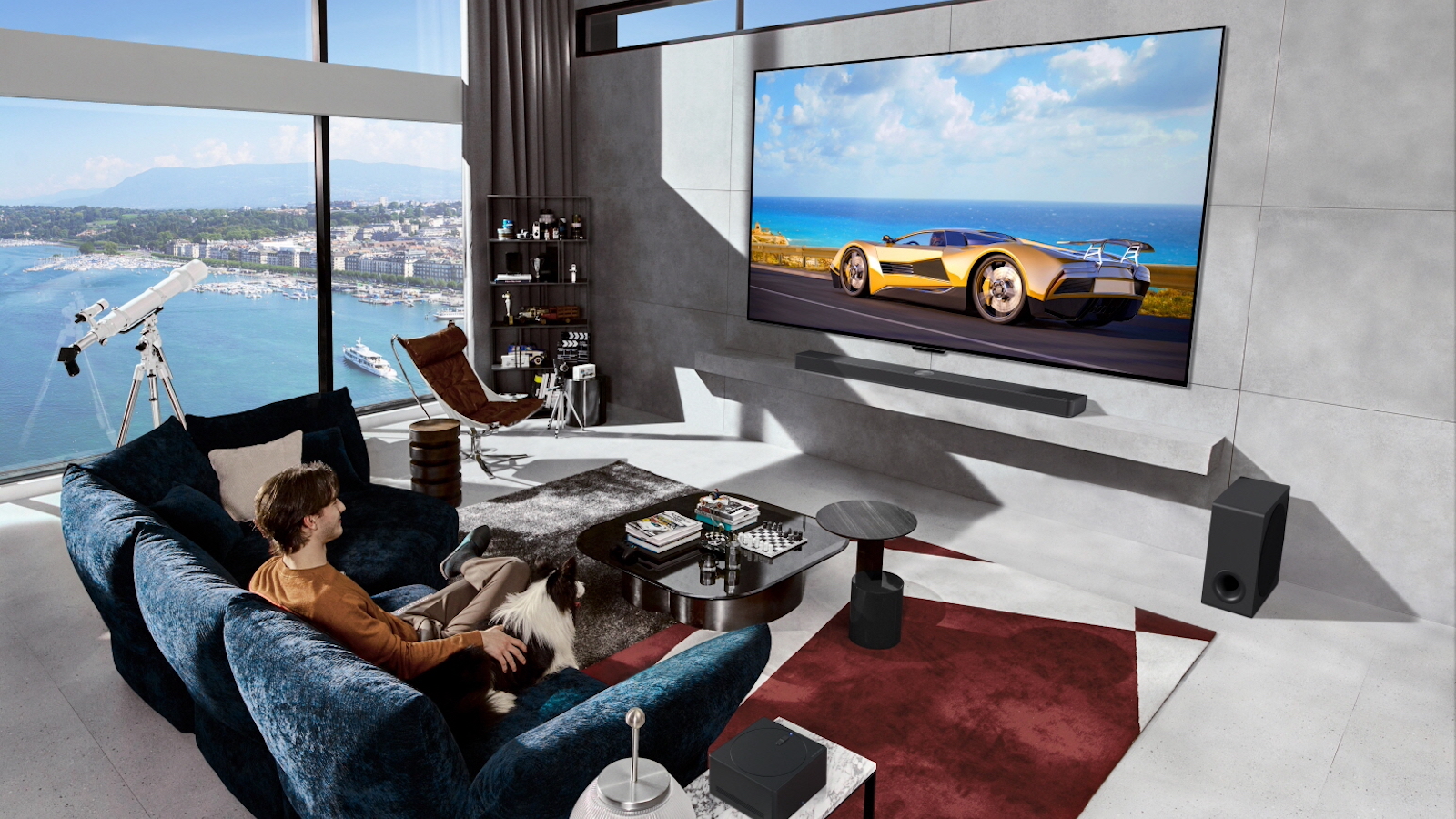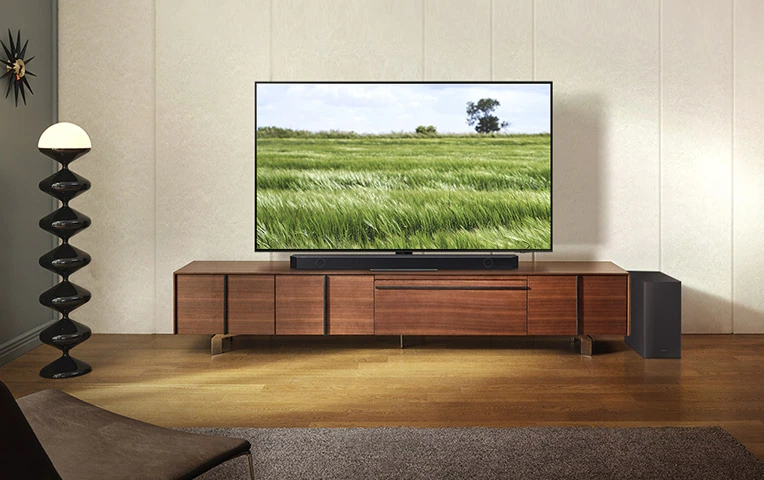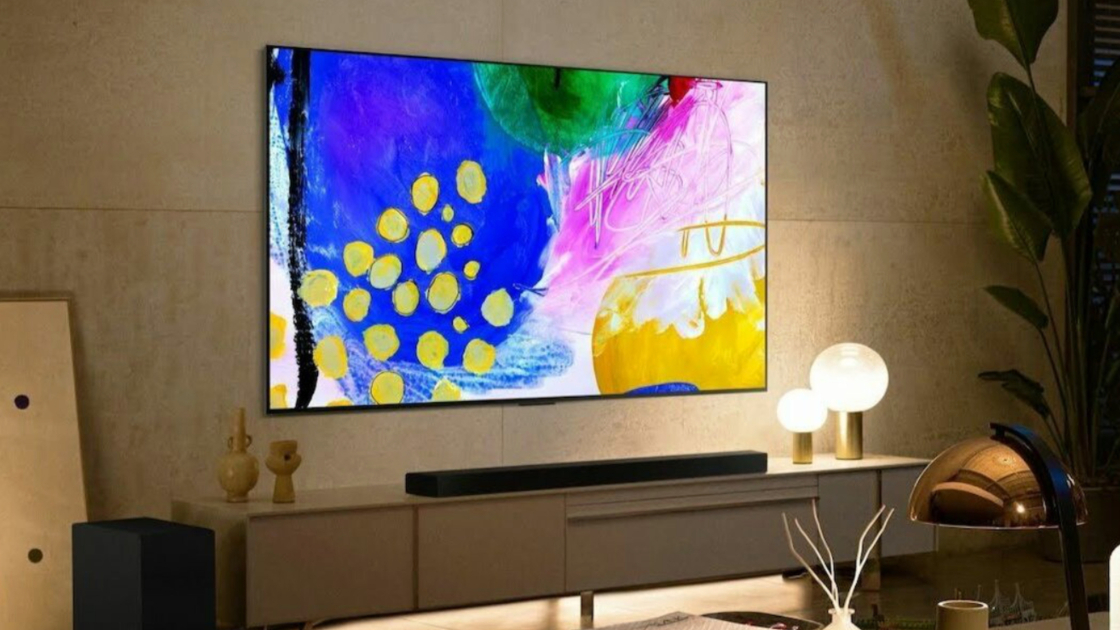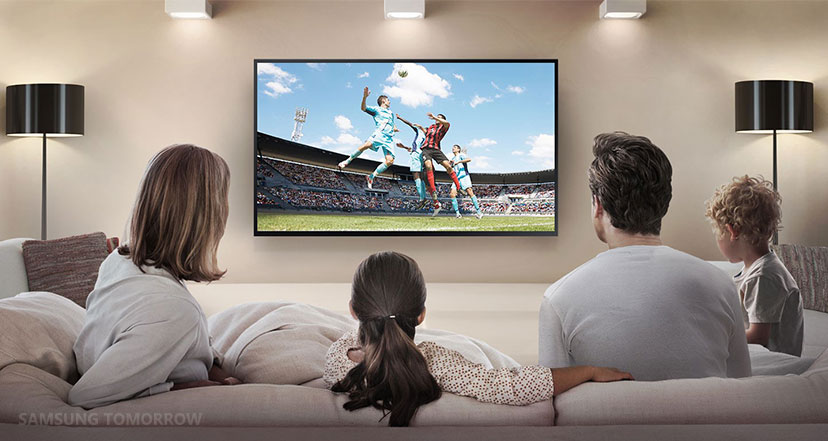How to calculate the right viewing distance for your TV
Or, coming at it from the other way, what size of TV should you buy?

Probably the biggest decision when buying a new TV is what screen size to go for.
This shouldn't only be influenced by the size of your TV cabinet, but the size of your room, too – if you end up sitting too close to the screen, you're going to get serious neck ache. Too far away, meanwhile, and you will be robbed of the full cinematic experience.
If you're wondering what the correct distance to sit from the screen is, you've come to the right place.
This guide isn't just handy if you're buying a new TV – those moving home, or rearranging their room, will also find it useful. Or anyone thinking they're not getting the most from their TV.
If that's you, read on, and we'll help you get the best experience possible.
Why does viewing distance matter?

The idea of ideal viewing distances came in some years ago when screens weren’t of the standard that they are today.
This meant that if you sat too close to your TV, you could see the individual pixels that make up a picture, and sitting a little further back would help to disguise that.
The latest hi-fi, home cinema and tech news, reviews, buying advice and deals, direct to your inbox.
Considering the strides forward that have been made in screen technology in recent years, this isn’t really an issue any more. However, there are still things you might want to consider when plonking yourself down in front of your telly if you want to get the most out of your viewing experience.
This can also help you to decide the best size TV for your room, by working out the viewing distance your room can offer.
What is the ideal viewing distance for 4K TVs?

We expect that most people reading this will be investing in a 4K TV, considering that Full HD TVs are now few and far between. With all the pixels in a 4K screen, you could sit with your nose against it and still struggle to notice any imperfections.
This means you can go for a bigger screen in a smaller room and not experience any of the downsides you may have had with a Full HD screen.
Going for a bigger screen also gives you an improved sense of picture quality and a more immersive viewing experience.
If you’re trying to decide between two screen sizes, we'd almost always recommend you go for the larger one if your budget allows – assuming, that is, that the larger TV isn't also a worse TV. (Our list of best TVs will help you avoid this.)
There is a sweet spot, though. You don’t want to be so close to the TV that you’re having to scan the screen for action, either – something you might notice more when you’re watching sports rather than movies.
For this reason, you need to consider a position where you can take in the whole screen within your field of vision.
A human has around a 180-degree total visual field, but the central vision (the bit that you see straight in front of you) is much narrower, at around 60 degrees.
The Society of Motion Picture and Television Engineers recommends that your TV should fill around 30 degrees of your field of vision for mixed usage.
However, if your TV is in a home cinema room that will be used mainly for movie watching, both the SMPTE and THX recommend you should up this to around 40 degrees instead.
To make that a little simpler, we tend to recommend that for a 4K TV you sit between 1 and 1.5 times the size of it away from its screen. And if you aim somewhere down the middle of that, at around 1.2x, you’ll be close to the 40-degree field of vision sweet spot that is recommended above.
The easy way to work this out is to take your TV’s screen size (measured, as ever, on the diagonal) – be that 48, 55 or 65 inches – and multiply it by 1.2. This will give you the distance in inches. Depending on the measurements you use, you can multiply this number by 2.54 to get it in centimetres instead.
For example, to find the ideal viewing distance for a 65-inch 4K TV you would calculate: (65 x 1.2) x 2.54 = 198.12. So that’s a viewing distance of 1.98 metres.
Prefer to work in feet and inches? That’s even easier. It just so happens that a 43-inch TV would need a viewing distance of 4ft 3in, a 55-inch TV would need a viewing distance of 5ft 5in, and a 65-incher a 6ft 5in – and so on.
How does that all look on paper? Allow us to do the maths...
TV size (inches) | Distance |
|---|---|
42 | 1.28m (4.2ft) |
43 | 1.32m (4.3ft) |
46 | 1.4m (4.6ft) |
50 | 1.52m (5ft) |
55 | 1.68m (5.5ft) |
65 | 1.98m (6.5ft) |
75 | 2.29m (7.5ft) |
85 | 2.59m (8.5ft) |
If you watch a lot of sport, you might want to consider sitting slightly further back for a more comfortable watch, but these numbers give you a starting point.
Do bear in mind that these distances are based on one person viewing the TV straight on and at eye level, so other seating positions will need to be considered separately. There are very few rooms that are going to be able to accommodate several perfect viewing spots, mind you, so just do what you can to keep them as close to the same distance away as possible.
And in case we need to remind you, don’t even think about mounting your TV up in that space over the fireplace unless you want a front-row-at-the-cinema-style neck ache.
What about ideal viewing distances for Full HD?

If you do still have a Full HD TV in your house, the distances above will need to be adjusted so you are a little further away, to ensure you aren’t so close that you see the pixel structure. Generally, we recommend this viewing distance to be between 1.5 and 2.5 times the size of your TV.
TV size (inches) | Distance (min) | Distance (max) |
|---|---|---|
32 | 1.22m | 2.03m |
40 | 1.52m | 2.54m |
42 | 1.6m | 2.67m |
43 | 1.64m | 2.73m |
50 | 1.9m | 3.18m |
55 | 2.09m | 3.49m |
Guidelines, not rules

As is often the case with home cinema set-up advice, these numbers and measurements can be helpful guidelines, but you should always consider what's in front of you, too – the shape of your room, its space restrictions and your personal preference. If you prefer something closer or further away, go for it. Part of the beauty of home cinema is in its subjectivity.
However, if you’re still trying to decide which size TV to buy, we're firmly in the camp that you'll never regret going bigger if your budget and room size allows. Just be sure to balance that with performance too – our in-depth TV reviews and best TV buying guide should help you out there.
MORE:
Best 65-inch TVs: the top models we've tested
Find out how to set up your TV and get the best picture
How to combine stereo and surround sound in one AV system – your guide
Verity is a freelance technology journalist and former Multimedia Editor at What Hi-Fi?.
Having chalked up more than 15 years in the industry, she has covered the highs and lows across the breadth of consumer tech, sometimes travelling to the other side of the world to do so. With a specialism in audio and TV, however, it means she's managed to spend a lot of time watching films and listening to music in the name of "work".
You'll occasionally catch her on BBC Radio commenting on the latest tech news stories, and always find her in the living room, tweaking terrible TV settings at parties.
You must confirm your public display name before commenting
Please logout and then login again, you will then be prompted to enter your display name.

